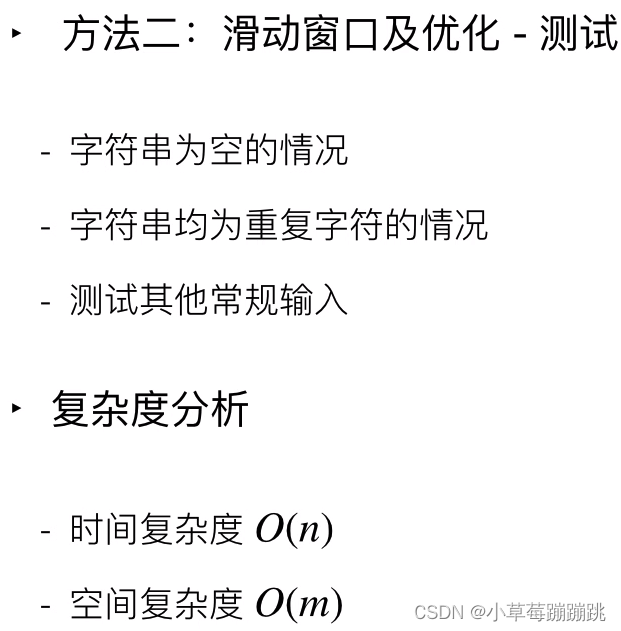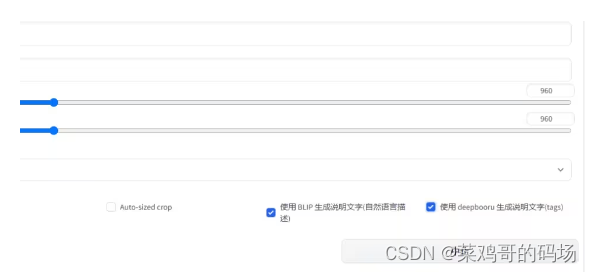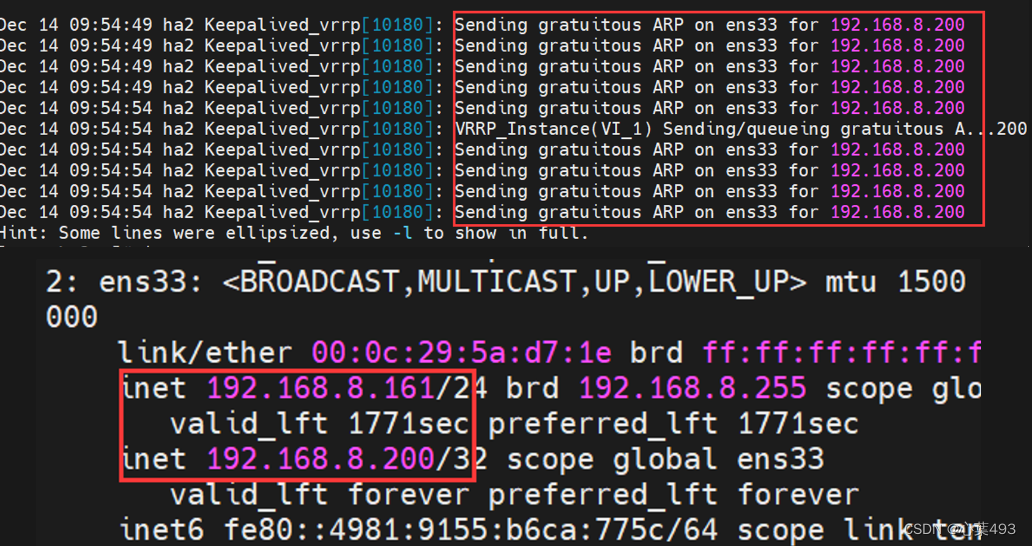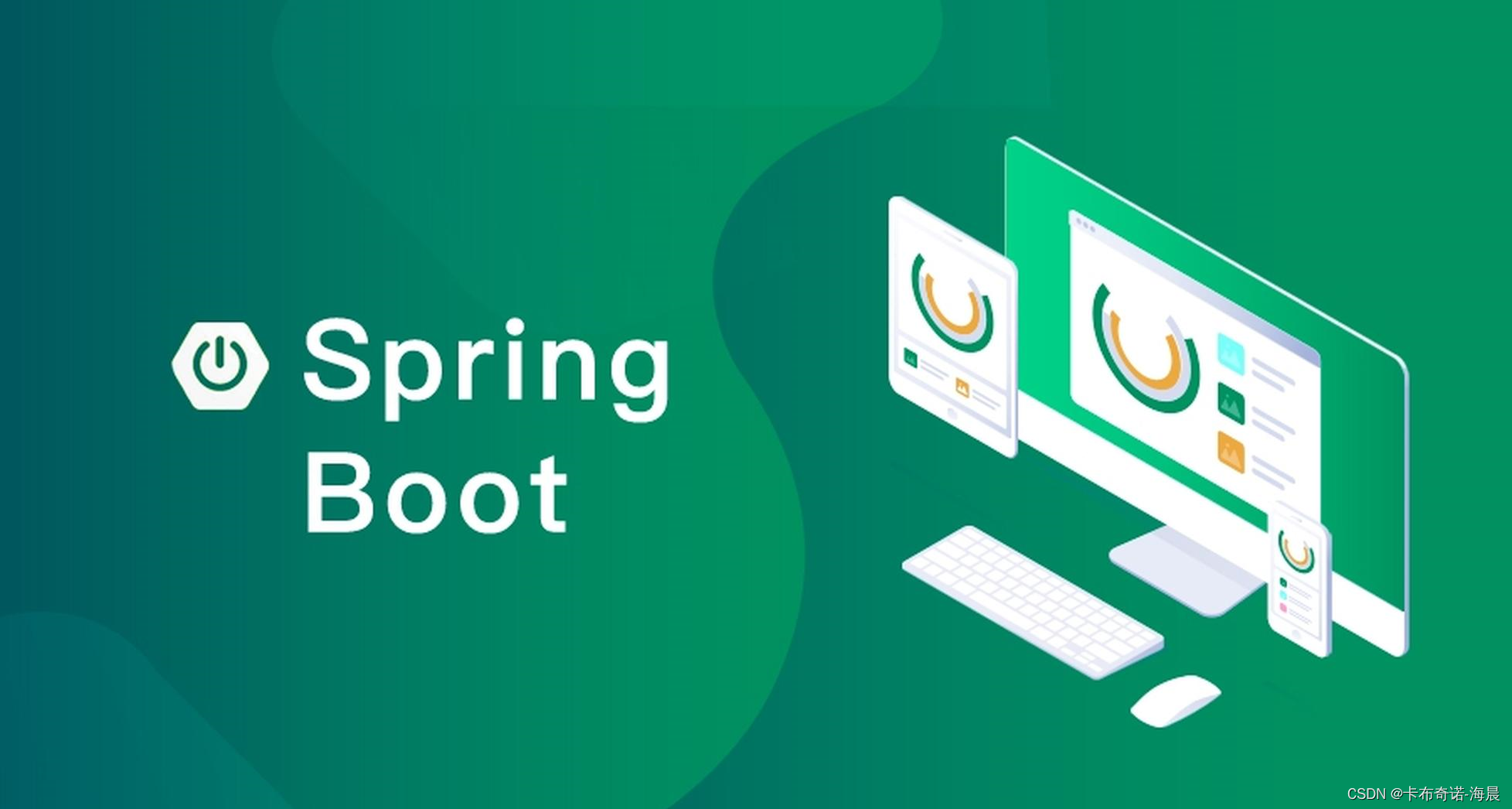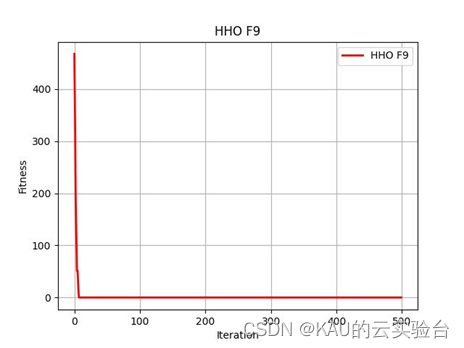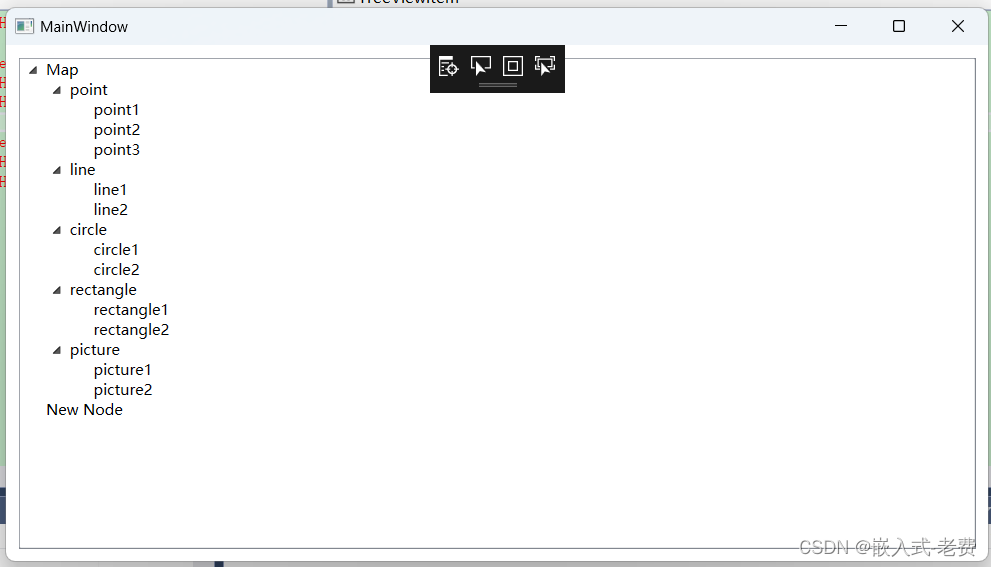文章目录
- 1、客户端注册流程
- 1.1、读取配置
- 1.1.1、用于注册的 ZookeeperClientRegisterRepository
- 1.1.2、用于扫描构建 元数据 和 URI 的 SpringMvcClientEventListener
- 1.2、扫描注解,注册元数据和URI
- 1.2.1、构建URI并写入Disruptor
- 1.2.2、构建元数据并写入Disruptor
- 1.2.3、Disruptor消费数据并向shenyu-admin注册数据
- 2、服务端注册流程
- 2.1、读取配置
- 2.1.1、用于监听的ShenyuClientServerRegisterRepository
- 2.2、注册元数据和URI
- 2.2.1、监听数据变更并写入Disruptor
- 2.2.2、Disruptor消费数据并持久化
1、客户端注册流程
当客户端启动后,根据相关配置,读取属性信息,然后写入队列。以官方提供的 shenyu-examples-http 为例,开始源码分析。
1.1、读取配置
该例子是一个springboot项目,所以注册的入口往往在自动装配类中。不妨可以先看下项目的pom文件中引入了什么依赖:
<dependencies>
<dependency>
<groupId>org.apache.shenyu</groupId>
<artifactId>shenyu-spring-boot-starter-client-springmvc</artifactId>
<version>${project.version}</version>
</dependency>
<dependency>
<groupId>org.springframework.boot</groupId>
<artifactId>spring-boot-starter</artifactId>
</dependency>
<dependency>
<groupId>org.springframework.boot</groupId>
<artifactId>spring-boot-starter-actuator</artifactId>
</dependency>
<dependency>
<groupId>org.springframework.boot</groupId>
<artifactId>spring-boot-starter-webflux</artifactId>
</dependency>
<dependency>
<groupId>org.springframework.boot</groupId>
<artifactId>spring-boot-starter-logging</artifactId>
</dependency>
<dependency>
<groupId>org.springframework.boot</groupId>
<artifactId>spring-boot-starter-test</artifactId>
<scope>test</scope>
</dependency>
</dependencies>
这里面看到就shenyu-spring-boot-starter-client-springmvc是跟ShenYu相关的,所以入口应该就在这个依赖内了,看下这个依赖的项目结构:
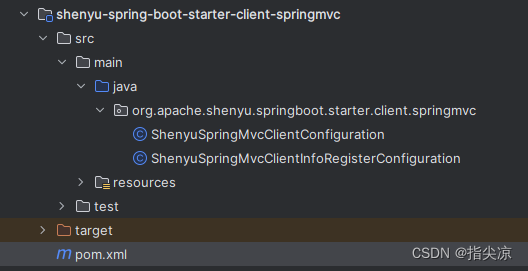
发现就是两个配置类,ShenyuSpringMvcClientInfoRegisterConfiguration由于使用了@Configuration(proxyBeanMethods = false),暂时不用关注,重点关注ShenyuSpringMvcClientConfiguration,它是shenyu客户端http注册配置类。
/**
* shenyu 客户端http注册配置类
*/
@Configuration
// shenyu客户端通用配置类
@ImportAutoConfiguration(ShenyuClientCommonBeanConfiguration.class)
@ConditionalOnProperty(value = "shenyu.register.enabled", matchIfMissing = true, havingValue = "true")
public class ShenyuSpringMvcClientConfiguration {
static {
VersionUtils.checkDuplicate(ShenyuSpringMvcClientConfiguration.class);
}
/**
*
* 监听并处理http元数据和URI信息的注册
*
* @param clientConfig 客户端注册配置
* @param shenyuClientRegisterRepository 客户端注册类
*/
@Bean
@ConditionalOnMissingBean(ClientRegisterConfiguration.class)
// 这里的两个参数是由ShenyuClientCommonBeanConfiguration导入的
public SpringMvcClientEventListener springHttpClientEventListener(final ShenyuClientConfig clientConfig,
final ShenyuClientRegisterRepository shenyuClientRegisterRepository) {
return new SpringMvcClientEventListener(clientConfig.getClient().get(RpcTypeEnum.HTTP.getName()), shenyuClientRegisterRepository);
}
}
通过@Configuration表示这是一个配置类,通过@ImportAutoConfiguration引入ShenyuClientCommonBeanConfiguration配置类。
/**
* shenyu客户端通用配置类,创建注册中心客户端通用的bean
*/
@Configuration
@ConditionalOnProperty(value = "shenyu.register.enabled", matchIfMissing = true, havingValue = "true")
public class ShenyuClientCommonBeanConfiguration {
/**
* 根据注册中心配置通过SPI方式创建客户端注册类
*/
@Bean
public ShenyuClientRegisterRepository shenyuClientRegisterRepository(final ShenyuRegisterCenterConfig config) {
return ShenyuClientRegisterRepositoryFactory.newInstance(config);
}
/**
* Shenyu 客户端注册中心配置,读取shenyu.register属性配置
*/
@Bean
@ConfigurationProperties(prefix = "shenyu.register")
public ShenyuRegisterCenterConfig shenyuRegisterCenterConfig() {
return new ShenyuRegisterCenterConfig();
}
/**
* Shenyu 客户端配置,读取shenyu.client属性配置
*/
@Bean
@ConfigurationProperties(prefix = "shenyu")
public ShenyuClientConfig shenyuClientConfig() {
return new ShenyuClientConfig();
}
}
ShenyuClientCommonBeanConfiguration是ShenYu客户端的通用配置类,创建了3个通用bean。
- ShenyuClientRegisterRepository:客户端注册类,用于将客户端接口信息注册到注册中心。
- ShenyuRegisterCenterConfig:
ShenYu客户端注册中心配置类,读取shenyu.register属性配置。 - ShenyuClientConfig:
ShenYu客户端配置类,读取shenyu.client属性配置。
1.1.1、用于注册的 ZookeeperClientRegisterRepository
上面生成的ShenyuClientRegisterRepository是用于实现客户端注册的接口,会根据注册中心的配置通过SPI方式创建客户端注册类,每一个注册方式都对应一个实现类。

目前支持7种注册类型:
- Http:HttpClientRegisterRepository
- Apollo:ApolloClientRegisterRepository
- Zookeeper:ZookeeperClientRegisterRepository
- Etcd:EtcdClientRegisterRepository
- Nacos:NacosClientRegisterRepository
- Consul:ConsulClientRegisterRepository
- Polaris:PolarisClientRegisterRepository
public final class ShenyuClientRegisterRepositoryFactory {
private static final Map<String, ShenyuClientRegisterRepository> REPOSITORY_MAP = new ConcurrentHashMap<>();
/**
* 根据注册中心类型实例化注册服务
*/
public static ShenyuClientRegisterRepository newInstance(final ShenyuRegisterCenterConfig shenyuRegisterCenterConfig) {
if (!REPOSITORY_MAP.containsKey(shenyuRegisterCenterConfig.getRegisterType())) {
// 通过SPI方式创建客户端注册类
ShenyuClientRegisterRepository result = ExtensionLoader.getExtensionLoader(ShenyuClientRegisterRepository.class).getJoin(shenyuRegisterCenterConfig.getRegisterType());
// 初始化对应客户端注册类,比如创建zookeeper client,etcd client,admin平台的token等
result.init(shenyuRegisterCenterConfig);
ShenyuClientShutdownHook.set(result, shenyuRegisterCenterConfig.getProps());
REPOSITORY_MAP.put(shenyuRegisterCenterConfig.getRegisterType(), result);
return result;
}
return REPOSITORY_MAP.get(shenyuRegisterCenterConfig.getRegisterType());
}
}
加载类型通过registerType指定,也就是我们在配置文件中指定的类型:
shenyu:
register:
registerType: zookeeper
serverLists: http://localhost:2181
这里指定的是zookeeper,所以这里创建的就是ZookeeperClientRegisterRepository。
创建对应的注册客户端后,会调用init方法根据shenyu.register下的配置进行初始化:
@Join
public class ZookeeperClientRegisterRepository implements ShenyuClientRegisterRepository {
@Override
public void init(final ShenyuRegisterCenterConfig config) {
Properties props = config.getProps();
int sessionTimeout = Integer.parseInt(props.getProperty("sessionTimeout", "3000"));
int connectionTimeout = Integer.parseInt(props.getProperty("connectionTimeout", "3000"));
int baseSleepTime = Integer.parseInt(props.getProperty("baseSleepTime", "1000"));
int maxRetries = Integer.parseInt(props.getProperty("maxRetries", "3"));
int maxSleepTime = Integer.parseInt(props.getProperty("maxSleepTime", String.valueOf(Integer.MAX_VALUE)));
ZookeeperConfig zkConfig = new ZookeeperConfig(config.getServerLists());
zkConfig.setBaseSleepTimeMilliseconds(baseSleepTime)
.setMaxRetries(maxRetries)
.setMaxSleepTimeMilliseconds(maxSleepTime)
.setSessionTimeoutMilliseconds(sessionTimeout)
.setConnectionTimeoutMilliseconds(connectionTimeout);
String digest = props.getProperty("digest");
if (!StringUtils.isEmpty(digest)) {
zkConfig.setDigest(digest);
}
// 创建zookeeper客户端
this.client = new ZookeeperClient(zkConfig);
this.client.getClient().getConnectionStateListenable().addListener((c, newState) -> {
if (newState == ConnectionState.RECONNECTED) {
nodeDataMap.forEach((k, v) -> {
if (!client.isExist(k)) {
client.createOrUpdate(k, v, CreateMode.EPHEMERAL);
LOGGER.info("zookeeper client register uri success: {}", v);
}
});
}
});
// 启动客户端
client.start();
}
}
这里主要就是创建zookeeper的客户端,为后面的发送注册数据做准备。其他注册类型的ShenyuClientRegisterRepository也一样,创建各自注册中心的client,连接注册中心,为发送数据做准备。类注解@Join用于SPI的加载。
1.1.2、用于扫描构建 元数据 和 URI 的 SpringMvcClientEventListener
回到一开始的ShenyuSpringMvcClientConfiguration配置类:
/**
* shenyu 客户端http注册配置类
*/
@Configuration
// shenyu客户端通用配置类
@ImportAutoConfiguration(ShenyuClientCommonBeanConfiguration.class)
@ConditionalOnProperty(value = "shenyu.register.enabled", matchIfMissing = true, havingValue = "true")
public class ShenyuSpringMvcClientConfiguration {
static {
VersionUtils.checkDuplicate(ShenyuSpringMvcClientConfiguration.class);
}
/**
*
* 监听并处理http元数据和URI信息的注册
*
* @param clientConfig 客户端注册配置
* @param shenyuClientRegisterRepository 客户端注册类
*/
@Bean
@ConditionalOnMissingBean(ClientRegisterConfiguration.class)
// 这里的两个参数是由ShenyuClientCommonBeanConfiguration导入的
public SpringMvcClientEventListener springHttpClientEventListener(final ShenyuClientConfig clientConfig,
final ShenyuClientRegisterRepository shenyuClientRegisterRepository) {
return new SpringMvcClientEventListener(clientConfig.getClient().get(RpcTypeEnum.HTTP.getName()), shenyuClientRegisterRepository);
}
}
创建了SpringMvcClientEventListener,负责客户端 元数据 和 URI 数据的构建和注册。SpringMvcClientEventListener继承了AbstractContextRefreshedEventListener,而AbstractContextRefreshedEventListener是一个抽象类,它实现了ApplicationListener接口,并重写了onApplicationEvent()方法,当有Spring事件发生后,该方法会执行。每一种后端服务RPC调用协议都对应了一个监听类。

public class SpringMvcClientEventListener extends AbstractContextRefreshedEventListener<Object, ShenyuSpringMvcClient> {
public SpringMvcClientEventListener(final PropertiesConfig clientConfig,
final ShenyuClientRegisterRepository shenyuClientRegisterRepository) {
super(clientConfig, shenyuClientRegisterRepository);
// client配置
Properties props = clientConfig.getProps();
// 是否是全部接口都注册
this.isFull = Boolean.parseBoolean(props.getProperty(ShenyuClientConstants.IS_FULL, Boolean.FALSE.toString()));
// http协议
this.protocol = props.getProperty(ShenyuClientConstants.PROTOCOL, ShenyuClientConstants.HTTP);
this.addPrefixed = Boolean.parseBoolean(props.getProperty(ShenyuClientConstants.ADD_PREFIXED,
Boolean.FALSE.toString()));
mappingAnnotation.add(ShenyuSpringMvcClient.class);
mappingAnnotation.add(RequestMapping.class);
}
// ...
}
SpringMvcClientEventListener的构造函数主要就是调用父类AbstractContextRefreshedEventListener的构造函数,传入客户端配置和客户端注册类,客户端配置指shenyu.client.http下的配置:
shenyu:
client:
http:
props:
contextPath: /http
appName: http-appName
port: 8189
isFull: false
public abstract class AbstractContextRefreshedEventListener<T, A extends Annotation> implements ApplicationListener<ContextRefreshedEvent> {
protected static final String PATH_SEPARATOR = "/";
// Disruptor 发布器
private final ShenyuClientRegisterEventPublisher publisher = ShenyuClientRegisterEventPublisher.getInstance();
// ...
public AbstractContextRefreshedEventListener(final PropertiesConfig clientConfig,
final ShenyuClientRegisterRepository shenyuClientRegisterRepository) {
// 读取 shenyu.client.http 配置信息
Properties props = clientConfig.getProps();
this.appName = props.getProperty(ShenyuClientConstants.APP_NAME);
this.contextPath = Optional.ofNullable(props.getProperty(ShenyuClientConstants.CONTEXT_PATH)).map(UriUtils::repairData).orElse("");
if (StringUtils.isBlank(appName) && StringUtils.isBlank(contextPath)) {
String errorMsg = "client register param must config the appName or contextPath";
LOG.error(errorMsg);
throw new ShenyuClientIllegalArgumentException(errorMsg);
}
this.ipAndPort = props.getProperty(ShenyuClientConstants.IP_PORT);
this.host = props.getProperty(ShenyuClientConstants.HOST);
this.port = props.getProperty(ShenyuClientConstants.PORT);
// 开始事件发布,启动 Disruptor
publisher.start(shenyuClientRegisterRepository);
}
}
取出相关配置信息后,就启动 Disruptor 队列,ShenyuClientRegisterEventPublisher可以看作是一个生产者,用来向队列发送数据,
public class ShenyuClientRegisterEventPublisher {
private static final ShenyuClientRegisterEventPublisher INSTANCE = new ShenyuClientRegisterEventPublisher();
private DisruptorProviderManage<DataTypeParent> providerManage;
public static ShenyuClientRegisterEventPublisher getInstance() {
return INSTANCE;
}
/**
* Start.
*
* @param shenyuClientRegisterRepository shenyuClientRegisterRepository
*/
public void start(final ShenyuClientRegisterRepository shenyuClientRegisterRepository) {
// 注册任务工厂类,用于创建注册的任务,客户端使用的是RegisterClientExecutorFactory,
// 而在服务端(shenyu-admin)用于处理注册任务的是RegisterServerConsumerExecutor,
// 都是用于消费Disruptor数据的任务
RegisterClientExecutorFactory factory = new RegisterClientExecutorFactory();
// 添加元数据订阅器
factory.addSubscribers(new ShenyuClientMetadataExecutorSubscriber(shenyuClientRegisterRepository));
// 添加URI订阅器
factory.addSubscribers(new ShenyuClientURIExecutorSubscriber(shenyuClientRegisterRepository));
// 添加ApiDoc订阅器
factory.addSubscribers(new ShenyuClientApiDocExecutorSubscriber(shenyuClientRegisterRepository));
providerManage = new DisruptorProviderManage<>(factory);
// 启动Disruptor队列,并创建消费者
providerManage.startup();
}
/**
* 发布事件,向Disruptor队列发数据
*
* @param data the data
*/
public void publishEvent(final DataTypeParent data) {
DisruptorProvider<DataTypeParent> provider = providerManage.getProvider();
provider.onData(data);
}
}
start方法主要是为队列添加订阅器,会由消费者接收到信息后调用这些订阅器。然后启动启动Disruptor队列,并创建消费者。
public class DisruptorProviderManage<T> {
public void startup() {
this.startup(false);
}
public void startup(final boolean isOrderly) {
OrderlyExecutor executor = new OrderlyExecutor(isOrderly, consumerSize, consumerSize, 0, TimeUnit.MILLISECONDS,
new LinkedBlockingQueue<>(),
DisruptorThreadFactory.create("shenyu_disruptor_consumer_", false), new ThreadPoolExecutor.AbortPolicy());
int newConsumerSize = this.consumerSize;
EventFactory<DataEvent<T>> eventFactory;
if (isOrderly) {
newConsumerSize = 1;
eventFactory = new OrderlyDisruptorEventFactory<>();
} else {
eventFactory = new DisruptorEventFactory<>();
}
Disruptor<DataEvent<T>> disruptor = new Disruptor<>(eventFactory,
size,
DisruptorThreadFactory.create("shenyu_disruptor_provider_" + consumerFactory.fixName(), false),
ProducerType.MULTI,
new BlockingWaitStrategy());
// 创建消费者
@SuppressWarnings("all")
QueueConsumer<T>[] consumers = new QueueConsumer[newConsumerSize];
for (int i = 0; i < newConsumerSize; i++) {
consumers[i] = new QueueConsumer<>(executor, consumerFactory);
}
// 设置消费者
disruptor.handleEventsWithWorkerPool(consumers);
disruptor.setDefaultExceptionHandler(new IgnoreExceptionHandler());
// 真正调用disruptor的api启动
disruptor.start();
RingBuffer<DataEvent<T>> ringBuffer = disruptor.getRingBuffer();
// disruptor的生产者
provider = new DisruptorProvider<>(ringBuffer, disruptor, isOrderly);
}
}
这里就是准备Disruptor队列的一些逻辑,就不细讲了,其中QueueConsumer是Disruptor的消费者,后面就是由它接收数据。
1.2、扫描注解,注册元数据和URI
上面说到SpringMvcClientEventListener继承了AbstractContextRefreshedEventListener,而AbstractContextRefreshedEventListener实现了ApplicationListener接口,并重写了onApplicationEvent()方法,当有Spring事件发生后,该方法会执行。
// 当有上下文刷新事件ContextRefreshedEvent发生时,该方法会执行,算是客户端的执行入口吧
@Override
public void onApplicationEvent(@NonNull final ContextRefreshedEvent event) {
context = event.getApplicationContext();
// 获取客户端的接口类,比如http就是Controller类,dubbo就是@DubboService类,由子类实现
Map<String, T> beans = getBeans(context);
if (MapUtils.isEmpty(beans)) {
return;
}
// 保证只注册一次
if (!registered.compareAndSet(false, true)) {
return;
}
// 构建URI并写入Disruptor,由子类实现
publisher.publishEvent(buildURIRegisterDTO(context, beans));
// 构建元数据并写入Disruptor
beans.forEach(this::handle);
Map<String, Object> apiModules = context.getBeansWithAnnotation(ApiModule.class);
apiModules.forEach((k, v) -> handleApiDoc(v, beans));
}
获取客户端服务的接口类,由具体的子类实现,http就是Controller类,这里对应的子类就是SpringMvcClientEventListener
@Override
protected Map<String, Object> getBeans(final ApplicationContext context) {
// Filter out
if (Boolean.TRUE.equals(isFull)) {
// isFull=true,表示代理整个服务,就不需要注解扫描了,
// 直接构建元数据和URI,写入Disruptor
getPublisher().publishEvent(MetaDataRegisterDTO.builder()
.contextPath(getContextPath())
.addPrefixed(addPrefixed)
.appName(getAppName())
.path(PathUtils.decoratorPathWithSlash(getContextPath()))
.rpcType(RpcTypeEnum.HTTP.getName())
.enabled(true)
.ruleName(getContextPath())
.build());
LOG.info("init spring mvc client success with isFull mode");
// 构建URI
publisher.publishEvent(buildURIRegisterDTO(context, Collections.emptyMap()));
return Collections.emptyMap();
}
// 否则获取@Controller注解的bean
return context.getBeansWithAnnotation(Controller.class);
}
这里会判断配置文件中的shenyu.client.http.props.isFull,如果是true,则直接构建一个元数据和URI,写入到Disruptor中,然后返回一个空集合,后续的逻辑就没执行了。如果是false,则从spring容器中获取带@Controller注解的bean返回。
1.2.1、构建URI并写入Disruptor
构建一个URI数据写入到Disruptor,这个也是由子类实现的:
// 构建URI
@Override
protected URIRegisterDTO buildURIRegisterDTO(final ApplicationContext context,
final Map<String, Object> beans) {
try {
return URIRegisterDTO.builder()
.contextPath(getContextPath()) // shneyu得contextPath
.appName(getAppName()) // appName
.protocol(protocol) // 服务协议
.host(super.getHost()) // 服务host
.port(Integer.valueOf(getPort())) // 服务端口
.rpcType(RpcTypeEnum.HTTP.getName()) // rpc类型
.eventType(EventType.REGISTER) // 事件类型
.build();
} catch (ShenyuException e) {
throw new ShenyuException(e.getMessage() + "please config ${shenyu.client.http.props.port} in xml/yml !");
}
}
可以看出来URI跟接口类没有关系,一个后端服务实例生成一个URI。
1.2.2、构建元数据并写入Disruptor
之后遍历每个接口构建元数据beans.forEach(this::handle)
/**
* 构建元数据并写入Disruptor
*/
protected void handle(final String beanName, final T bean) {
Class<?> clazz = getCorrectedClass(bean);
// 获取当前bean的对应shenyu客户端的注解,比如http是@ShenyuSpringMvcClient,
// dubbo是@ShenyuDubboClient
final A beanShenyuClient = AnnotatedElementUtils.findMergedAnnotation(clazz, getAnnotationType());
// 获取bean对应的path(类上注解的路径),由子类实现
final String superPath = buildApiSuperPath(clazz, beanShenyuClient);
// 如果有shenyu客户端注解并且path中包含*,则表示要注册整个类的方法,只需要构建一个类元数据
if (Objects.nonNull(beanShenyuClient) && superPath.contains("*")) {
// 由具体的子类构建类元数据写入Disruptor
handleClass(clazz, bean, beanShenyuClient, superPath);
return;
}
// 类上没有shenyu客户端注解(类上没有注解,但方法上有注解,也是可以注册的),
// 或者有注解但是path没有包含*,则就要遍历每个方法,为每个需要注册的方法构建方法元数据
final Method[] methods = ReflectionUtils.getUniqueDeclaredMethods(clazz);
for (Method method : methods) {
// 由具体子类构建方法元数据写入Disruptor,并将每个method对应的元数据对象缓存在当前类里
handleMethod(bean, clazz, beanShenyuClient, method, superPath);
}
}
protected void handleClass(final Class<?> clazz,
final T bean,
@NonNull final A beanShenyuClient,
final String superPath) {
publisher.publishEvent(buildMetaDataDTO(bean, beanShenyuClient, pathJoin(contextPath, superPath), clazz, null));
}
protected void handleMethod(final T bean,
final Class<?> clazz,
@Nullable final A beanShenyuClient,
final Method method,
final String superPath) {
// 如果方法上有Shenyu客户端注解,就表示该方法需要注册
A methodShenyuClient = AnnotatedElementUtils.findMergedAnnotation(method, getAnnotationType());
if (Objects.nonNull(methodShenyuClient)) {
final MetaDataRegisterDTO metaData = buildMetaDataDTO(bean, methodShenyuClient,
buildApiPath(method, superPath, methodShenyuClient), clazz, method);
publisher.publishEvent(metaData);
metaDataMap.put(method, metaData);
}
}
// 获取接口对应路径,如果shenyu注解上没有,就用@RequestMapping上的路径,
// 但是这个只支持第一个路径
@Override
protected String buildApiSuperPath(final Class<?> clazz, @Nullable final ShenyuSpringMvcClient beanShenyuClient) {
if (Objects.nonNull(beanShenyuClient) && StringUtils.isNotBlank(beanShenyuClient.path())) {
return beanShenyuClient.path();
}
RequestMapping requestMapping = AnnotationUtils.findAnnotation(clazz, RequestMapping.class);
// Only the first path is supported temporarily
if (Objects.nonNull(requestMapping) && ArrayUtils.isNotEmpty(requestMapping.path()) && StringUtils.isNotBlank(requestMapping.path()[0])) {
return requestMapping.path()[0];
}
return "";
}
// springmvc接口上需要有 ShenyuSpringMvcClient 注解,
// 并且包含RequestMapping注解(表示是一个接口),才进行注册
protected void handleMethod(final Object bean, final Class<?> clazz,
@Nullable final ShenyuSpringMvcClient beanShenyuClient,
final Method method, final String superPath) {
final RequestMapping requestMapping = AnnotatedElementUtils.findMergedAnnotation(method, RequestMapping.class);
ShenyuSpringMvcClient methodShenyuClient = AnnotatedElementUtils.findMergedAnnotation(method, ShenyuSpringMvcClient.class);
methodShenyuClient = Objects.isNull(methodShenyuClient) ? beanShenyuClient : methodShenyuClient;
// 如果有 ShenyuSpringMvcClient 注解并且包含RequestMapping注解(表示是一个接口),则进行注册
if (Objects.nonNull(methodShenyuClient) && Objects.nonNull(requestMapping)) {
// 构建元数据
final MetaDataRegisterDTO metaData = buildMetaDataDTO(bean, methodShenyuClient,
// 构建path = contextPath + 类上的路径 + 方法上的路径
buildApiPath(method, superPath, methodShenyuClient), clazz, method);
// 发布元数据
getPublisher().publishEvent(metaData);
getMetaDataMap().put(method, metaData);
}
}
// path = contextPath + 类上的路径 + 方法上的路径,
// 如果@ShenyuSpringMvcClient注解上的路径不为空,则方法上的路径=@ShenyuSpringMvcClient上的value,
// 否则,方法上的路径=@RequestMapping上的value
@Override
protected String buildApiPath(final Method method, final String superPath,
@NonNull final ShenyuSpringMvcClient methodShenyuClient) {
String contextPath = getContextPath();
if (StringUtils.isNotBlank(methodShenyuClient.path())) {
return pathJoin(contextPath, superPath, methodShenyuClient.path());
}
final String path = getPathByMethod(method);
if (StringUtils.isNotBlank(path)) {
return pathJoin(contextPath, superPath, path);
}
return pathJoin(contextPath, superPath);
}
1.2.3、Disruptor消费数据并向shenyu-admin注册数据
上面启动Disruptor的时候说到QueueConsumer实现了WorkHandler接口,是Disruptor的消费者,消费逻辑就在它的onEvent方法中:
public class QueueConsumer<T> implements WorkHandler<DataEvent<T>> {
private final OrderlyExecutor executor;
private final QueueConsumerFactory<T> factory;
public QueueConsumer(final OrderlyExecutor executor, final QueueConsumerFactory<T> factory) {
this.executor = executor;
this.factory = factory;
}
@Override
public void onEvent(final DataEvent<T> t) {
if (Objects.nonNull(t)) {
// 根据事件类型使用不同的线程池
ThreadPoolExecutor executor = orderly(t);
// 通过工厂创建队列消费任务 RegisterClientConsumerExecutor
QueueConsumerExecutor<T> queueConsumerExecutor = factory.create();
// 为消费任务设置数据
queueConsumerExecutor.setData(t.getData());
t.setData(null);
// 放在线程池中执行 消费任务
executor.execute(queueConsumerExecutor);
}
}
// ...
}
QueueConsumerExecutor是实现了Runnable的消费任务,它有两个实现:
- RegisterClientConsumerExecutor:客户端消费者任务
- RegisterServerConsumerExecutor:服务端消费者任务
从名字也可以看出,RegisterClientConsumerExecutor负责处理客户端任务,shenyu客户端将元数据和URI写入disruptor后由这个消费者任务来消费数据,执行实际向注册中心注册的操作。RegisterServerConsumerExecutor负责处理服务端(shenyu-admin)任务,服务端从注册中心监听到元数据和URI后写入disruptor,然后由RegisterServerConsumerExecutor任务来消费数据,处理数据入库操作和发布事件。
RegisterClientConsumerExecutor的消费逻辑:
public final class RegisterClientConsumerExecutor<T extends DataTypeParent> extends QueueConsumerExecutor<T> {
private final Map<DataType, ExecutorTypeSubscriber<T>> subscribers;
private RegisterClientConsumerExecutor(final Map<DataType, ExecutorTypeSubscriber<T>> executorSubscriberMap) {
this.subscribers = new EnumMap<>(executorSubscriberMap);
}
@Override
public void run() {
// 获取数据
final T data = getData();
// 根据数据类型获取对应的处理器进行处理,即在disruptor启动的时候添加的订阅器
subscribers.get(data.getType()).executor(Lists.newArrayList(data));
}
// ...
}
根据不同的数据类型使用不同的订阅器执行器去执行,这些订阅器是在disruptor启动的时候设置的。目前注册的数据类型有3种,元数据,URI和API文档。
public enum DataType {
/**
* Meta data data type enum.
*/
META_DATA,
/**
* Uri data type enum.
*/
URI,
/**
* Api doc type enum.
*/
API_DOC,
}
所以相对应的订阅器也分为3类,分别处理元数据,URI和API文档。在客户端和服务端分别有两个,所以一共是6个。

元数据处理
public class ShenyuClientMetadataExecutorSubscriber implements ExecutorTypeSubscriber<MetaDataRegisterDTO> {
private final ShenyuClientRegisterRepository shenyuClientRegisterRepository;
// ...
/**
* 遍历元数据,对数据注册到注册中心
*/
@Override
public void executor(final Collection<MetaDataRegisterDTO> metaDataRegisterDTOList) {
for (MetaDataRegisterDTO metaDataRegisterDTO : metaDataRegisterDTOList) {
// 调用响应注册中心的客户端注册类注册元数据
shenyuClientRegisterRepository.persistInterface(metaDataRegisterDTO);
}
}
}
遍历数据,然后又将数据委托给ShenyuClientRegisterRepository执行。ShenyuClientRegisterRepository是在一开始读取配置的时候就创建了,是客户端注册类,用来将数据发送到注册中心的类,不同的注册方式有不同的实现类,该示例使用zookeeper方式注册(shenyu.register.registerType=zookeeper)的实现类是ZookeeperClientRegisterRepository。
@Override
public void persistInterface(final MetaDataRegisterDTO metadata) {
// 后端服务rpc类型
String rpcType = metadata.getRpcType();
// contextPath = StringUtils.isEmpty(contextPath) ? appName : contextPath
String contextPath = ContextPathUtils.buildRealNode(metadata.getContextPath(), metadata.getAppName());
// 注册元数据
registerMetadata(rpcType, contextPath, metadata);
}
private void registerMetadata(final String rpcType,
final String contextPath,
final MetaDataRegisterDTO metadata) {
// 构建元数据节点名称
String metadataNodeName = buildMetadataNodeName(metadata);
// 构建元数据的整体父路径 /shenyu/register/metadata/${rpcType}/${contextPath}
String metaDataPath = RegisterPathConstants.buildMetaDataParentPath(rpcType, contextPath);
// 当前元数据在zookeeper中的实际路径,上面两个拼起来
String realNode = RegisterPathConstants.buildRealNode(metaDataPath, metadataNodeName);
// 防止同一个元数据添加多次
synchronized (metadataSet) {
if (metadataSet.contains(realNode)) {
return;
}
metadataSet.add(realNode);
}
// 使用客户端类往zookeeper添加数据,元数据是永久节点
client.createOrUpdate(realNode, metadata, CreateMode.PERSISTENT);
LOGGER.info("{} zookeeper client register metadata success: {}", rpcType, metadata);
}
client是shenyu对zookeeper操作接口的封装
public void createOrUpdate(final String key, final Object value, final CreateMode mode) {
if (value != null) {
// 元数据以json字符串形式存储
String val = GsonUtils.getInstance().toJson(value);
createOrUpdate(key, val, mode);
} else {
createOrUpdate(key, "", mode);
}
}
public void createOrUpdate(final String key, final String value, final CreateMode mode) {
String val = StringUtils.isEmpty(value) ? "" : value;
try {
// 使用Curator的API往zookeeper保存数据
client.create().orSetData().creatingParentsIfNeeded().withMode(mode).forPath(key, val.getBytes(StandardCharsets.UTF_8));
} catch (Exception e) {
throw new ShenyuException(e);
}
}
注册方式比较简单,将元数据的json文本设置到zookeeper对应的路径节点中。
URI处理
public class ShenyuClientURIExecutorSubscriber implements ExecutorTypeSubscriber<URIRegisterDTO> {
@Override
public void executor(final Collection<URIRegisterDTO> dataList) {
for (URIRegisterDTO uriRegisterDTO : dataList) {
Stopwatch stopwatch = Stopwatch.createStarted();
// 这里的逻辑是为了探测客户端是否已经启动
while (true) {
try (Socket ignored = new Socket(uriRegisterDTO.getHost(), uriRegisterDTO.getPort())) {
break;
} catch (IOException e) {
long sleepTime = 1000;
// maybe the port is delay exposed
if (stopwatch.elapsed(TimeUnit.SECONDS) > 5) {
LOG.error("host:{}, port:{} connection failed, will retry",
uriRegisterDTO.getHost(), uriRegisterDTO.getPort());
// If the connection fails for a long time, Increase sleep time
if (stopwatch.elapsed(TimeUnit.SECONDS) > 180) {
sleepTime = 10000;
}
}
try {
TimeUnit.MILLISECONDS.sleep(sleepTime);
} catch (InterruptedException ex) {
LOG.error("interrupted when sleep", ex);
}
}
}
ShenyuClientShutdownHook.delayOtherHooks();
// 向注册中心注册URI数据
shenyuClientRegisterRepository.persistURI(uriRegisterDTO);
// 优雅停机
ShutdownHookManager.get().addShutdownHook(new Thread(() -> {
final URIRegisterDTO offlineDTO = new URIRegisterDTO();
BeanUtils.copyProperties(uriRegisterDTO, offlineDTO);
offlineDTO.setEventType(EventType.OFFLINE);
shenyuClientRegisterRepository.offline(offlineDTO);
}), 2);
}
}
}
URI注册逻辑跟元数据的一样
@Override
public void persistURI(final URIRegisterDTO registerDTO) {
// 后端服务rpc类型
String rpcType = registerDTO.getRpcType();
// contextPath = StringUtils.isEmpty(contextPath) ? appName : contextPath
String contextPath = ContextPathUtils.buildRealNode(registerDTO.getContextPath(), registerDTO.getAppName());
// 注册URI
registerURI(rpcType, contextPath, registerDTO);
LOGGER.info("{} zookeeper client register uri success: {}", rpcType, registerDTO);
}
private synchronized void registerURI(final String rpcType, final String contextPath, final URIRegisterDTO registerDTO) {
// uri节点名称 ${ip:port}
String uriNodeName = buildURINodeName(registerDTO);
// uri父路径 /shenyu/register/uri/{rpcType}/${contextPath}
String uriPath = RegisterPathConstants.buildURIParentPath(rpcType, contextPath);
// uri的完整路径,上面两个拼起来
String realNode = RegisterPathConstants.buildRealNode(uriPath, uriNodeName);
// uri节点数据
String nodeData = GsonUtils.getInstance().toJson(registerDTO);
nodeDataMap.put(realNode, nodeData);
// 往zookeeper设置uri数据,uri节点是临时节点
client.createOrUpdate(realNode, nodeData, CreateMode.EPHEMERAL);
}
分析到这里就将客户端的注册逻辑分析完了,通过读取自定义的注解信息构造元数据和URI,将数据发到Disruptor队列,然后从队列中消费数据,将数据写到Zookeeper节点中。Zookeeper存储结构如下:
shenyu
├──regsiter
├ ├──metadata
├ ├ ├──${rpcType}
├ ├ ├ ├────${contextPath}
├ ├ ├ ├──${ruleName} : save metadata data of MetaDataRegisterDTO
├ ├──uri
├ ├ ├──${rpcType}
├ ├ ├ ├────${contextPath}
├ ├ ├ ├──${ip:port} : save uri data of URIRegisterDTO
├ ├ ├ ├──${ip:port}
2、服务端注册流程
2.1、读取配置
客户端是将数据注册到注册中心上,所以服务端(shenyu-admin)自然也是要从注册中心中监听数据的。注册中心配置类是RegisterCenterConfiguration,我们先看这个配置类:
/**
* 注册中心配置类
*/
@Configuration
public class RegisterCenterConfiguration {
/**
* 读取shenyu.register配置
*/
@Bean
@ConfigurationProperties(prefix = "shenyu.register")
public ShenyuRegisterCenterConfig shenyuRegisterCenterConfig() {
return new ShenyuRegisterCenterConfig();
}
/**
* 创建用于服务端的注册类,从注册中心中监听数据,然后将数据写入Disruptor队列中
*/
@Bean(destroyMethod = "close")
public ShenyuClientServerRegisterRepository shenyuClientServerRegisterRepository(final ShenyuRegisterCenterConfig shenyuRegisterCenterConfig,
final List<ShenyuClientRegisterService> shenyuClientRegisterService) {
// 从配置中获取注册类型
String registerType = shenyuRegisterCenterConfig.getRegisterType();
// 根据注册类型通过SPI方式创建对应的ShenyuClientServerRegisterRepository
ShenyuClientServerRegisterRepository registerRepository = ExtensionLoader.getExtensionLoader(ShenyuClientServerRegisterRepository.class).getJoin(registerType);
// 创建Disruptor发布者
RegisterClientServerDisruptorPublisher publisher = RegisterClientServerDisruptorPublisher.getInstance();
// 每种客户端类型(rpc类型)的处理类
Map<String, ShenyuClientRegisterService> registerServiceMap = shenyuClientRegisterService.stream().collect(Collectors.toMap(ShenyuClientRegisterService::rpcType, Function.identity()));
// 启动Disruptor,添加元数据和URI的订阅器
publisher.start(registerServiceMap);
// 初始化注册中心
registerRepository.init(publisher, shenyuRegisterCenterConfig);
return registerRepository;
}
}
该配置类创建了2个bean:
- ShenyuRegisterCenterConfig:
shenyu-admin注册中心配置,读取shenyu.register属性配置。 - ShenyuClientServerRegisterRepository:服务端注册类,用于从注册中心中监听数据,然后将数据写入
Disruptor队列中。
这里的创建Disruptor发布者,启动Disruptor等逻辑跟在客户端那边的一样,只是类是服务端这边的,就不再分析了。
2.1.1、用于监听的ShenyuClientServerRegisterRepository
上面生成的ShenyuClientServerRegisterRepository是用于实现服务端注册的接口,会根据注册中心的配置通过SPI方式创建注册类,每一个注册方式都对应一个实现类。
目前支持7种注册类型:
- Http:ShenyuClientHttpRegistryController
- Apollo:ApolloClientServerRegisterRepository
- Zookeeper:ZookeeperClientServerRegisterRepository
- Etcd:EtcdClientServerRegisterRepository
- Nacos:NacosClientServerRegisterRepository
- Consul:ConsulClientServerRegisterRepository
- Polaris:PolarisClientServerRegisterRepository
加载类型通过registerType指定,也就是我们在配置文件中指定的类型:
shenyu:
register:
registerType: zookeeper
serverLists: 127.0.0.1:2181
服务端的注册类型必须跟客户端的注册类型一致,这样服务端才可以监听到注册信息。这里要指定的是zookeeper,所以这里创建的就是ZookeeperClientServerRegisterRepository。
初始化ZookeeperClientServerRegisterRepository时会对zookeeper进行监听
@Join
public class ZookeeperClientServerRegisterRepository implements ShenyuClientServerRegisterRepository {
private ShenyuClientServerRegisterPublisher publisher;
private ZookeeperClient client;
@Override
public void init(final ShenyuClientServerRegisterPublisher publisher, final ShenyuRegisterCenterConfig config) {
this.init(config);
this.publisher = publisher;
Properties props = config.getProps();
int sessionTimeout = Integer.parseInt(props.getProperty("sessionTimeout", "3000"));
int connectionTimeout = Integer.parseInt(props.getProperty("connectionTimeout", "3000"));
int baseSleepTime = Integer.parseInt(props.getProperty("baseSleepTime", "1000"));
int maxRetries = Integer.parseInt(props.getProperty("maxRetries", "3"));
int maxSleepTime = Integer.parseInt(props.getProperty("maxSleepTime", String.valueOf(Integer.MAX_VALUE)));
ZookeeperConfig zkConfig = new ZookeeperConfig(config.getServerLists());
zkConfig.setBaseSleepTimeMilliseconds(baseSleepTime)
.setMaxRetries(maxRetries)
.setMaxSleepTimeMilliseconds(maxSleepTime)
.setSessionTimeoutMilliseconds(sessionTimeout)
.setConnectionTimeoutMilliseconds(connectionTimeout);
String digest = props.getProperty("digest");
if (!StringUtils.isEmpty(digest)) {
zkConfig.setDigest(digest);
}
// 创建zookeeper客户端
this.client = new ZookeeperClient(zkConfig);
// 启动客户端
client.start();
// 初始化订阅
initSubscribe();
}
private void initSubscribe() {
// 订阅元数据节点,由于是按rpc类型分类的,所以需要分别监听这几个rpc节点
RpcTypeEnum.acquireSupportMetadatas().forEach(rpcTypeEnum -> subscribeMetaData(rpcTypeEnum.getName()));
// 订阅URI节点,由于是按rpc类型分类的,所以需要分别监听这几个rpc节点
RpcTypeEnum.acquireSupportURIs().forEach(rpcTypeEnum -> subscribeURI(rpcTypeEnum.getName()));
}
// 订阅URI
private void subscribeURI(final String rpcType) {
// /shenyu/register/uri/${rpcType}
String contextPathParent = RegisterPathConstants.buildURIContextPathParent(rpcType);
// 添加监听
client.addCache(contextPathParent, new URICacheListener());
}
// 订阅元数据节点
private void subscribeMetaData(final String rpcType) {
// /shenyu/register/metadata/${rpcType}
String contextPathParent = RegisterPathConstants.buildMetaDataContextPathParent(rpcType);
// 添加监听
client.addCache(contextPathParent, new MetadataCacheListener());
}
// ...
}
2.2、注册元数据和URI
2.2.1、监听数据变更并写入Disruptor
前面分析到服务端启动初始化的时候,会对zookeeper节点进行监听,zookeeper节点结构如下:
shenyu
├──regsiter
├ ├──metadata
├ ├ ├──${rpcType}
├ ├ ├ ├────${contextPath}
├ ├ ├ ├──${ruleName} : save metadata data of MetaDataRegisterDTO
├ ├──uri
├ ├ ├──${rpcType}
├ ├ ├ ├────${contextPath}
├ ├ ├ ├──${ip:port} : save uri data of URIRegisterDTO
├ ├ ├ ├──${ip:port}
每一个rpcType节点都会由一个监听器,当它下面的节点变更的时候,会接收到变更的信息。
abstract static class AbstractRegisterListener implements TreeCacheListener {
@Override
public final void childEvent(final CuratorFramework client, final TreeCacheEvent event) {
ChildData childData = event.getData();
if (null == childData) {
return;
}
// 变更的路径
String path = childData.getPath();
if (Strings.isNullOrEmpty(path)) {
return;
}
event(event.getType(), path, childData);
}
protected abstract void event(TreeCacheEvent.Type type, String path, ChildData data);
}
// 元数据注册监听
class MetadataCacheListener extends AbstractRegisterListener {
@Override
public void event(final TreeCacheEvent.Type type, final String path, final ChildData data) {
// 如果不是"/shenyu/register"开头的路径,则略过
if (!path.contains(RegisterPathConstants.ROOT_PATH)) {
return;
}
Optional.ofNullable(data)
.ifPresent(e -> {
String str = new String(data.getData(), StandardCharsets.UTF_8);
// 往disruptor写入元数据
publishMetadata(str);
LOGGER.info("zookeeper register metadata success: {}", str);
});
}
}
// URI注册和下线监听
class URICacheListener extends AbstractRegisterListener {
@Override
public void event(final TreeCacheEvent.Type type, final String path, final ChildData data) {
// 不是叶子节点,即不是URI节点,则略过
if (data.getData() == null || data.getData().length == 0) {
return;
}
// 将节点的数据转为URI对象
URIRegisterDTO uriRegisterDTO = GsonUtils.getInstance()
.fromJson(new String(data.getData()), URIRegisterDTO.class);
if (uriRegisterDTO == null) {
return;
}
switch (type) {
case NODE_ADDED: // 服务注册
uriRegisterDTO.setEventType(EventType.REGISTER);
// 发布URI
publishRegisterURI(Arrays.asList(uriRegisterDTO));
break;
case NODE_REMOVED: // 服务下线
uriRegisterDTO.setEventType(EventType.OFFLINE);
// 往disruptor写入URI
publishRegisterURI(Arrays.asList(uriRegisterDTO));
break;
default:
break;
}
}
}
监听到元数据和URI变更后都是直接写入disruptor队列。
2.2.2、Disruptor消费数据并持久化
QueueConsumer实现了WorkHandler接口,是Disruptor的消费者,消费逻辑就在它的onEvent方法中:
public class QueueConsumer<T> implements WorkHandler<DataEvent<T>> {
private final OrderlyExecutor executor;
private final QueueConsumerFactory<T> factory;
/**
* Instantiates a new Queue consumer.
*
* @param executor the executor
* @param factory the factory
*/
public QueueConsumer(final OrderlyExecutor executor, final QueueConsumerFactory<T> factory) {
this.executor = executor;
this.factory = factory;
}
@Override
public void onEvent(final DataEvent<T> t) {
if (Objects.nonNull(t)) {
// 根据事件类型使用不同的线程池
ThreadPoolExecutor executor = orderly(t);
// 通过工厂创建队列消费任务 RegisterServerConsumerExecutor
QueueConsumerExecutor<T> queueConsumerExecutor = factory.create();
// 为消费任务设置数据
queueConsumerExecutor.setData(t.getData());
t.setData(null);
// 放在线程池中执行 消费任务
executor.execute(queueConsumerExecutor);
}
}
// ...
}
分析客户端注册流程的时候说到RegisterServerConsumerExecutor是服务端消费者任务,处理数据入库操作和发布事件。
RegisterServerConsumerExecutor消费逻辑:
public final class RegisterServerConsumerExecutor extends QueueConsumerExecutor<Collection<DataTypeParent>> {
// 每种数据类型的订阅器执行器
private final Map<DataType, ExecutorSubscriber<DataTypeParent>> subscribers;
private RegisterServerConsumerExecutor(final Map<DataType, ExecutorTypeSubscriber<DataTypeParent>> executorSubscriberMap) {
this.subscribers = new HashMap<>(executorSubscriberMap);
}
@Override
public void run() {
Collection<DataTypeParent> results = getData()
.stream()
.filter(this::isValidData)
.collect(Collectors.toList());
if (CollectionUtils.isEmpty(results)) {
return;
}
// 选择对应的数据类型的订阅器执行器去执行
selectExecutor(results).executor(results);
}
private ExecutorSubscriber<DataTypeParent> selectExecutor(final Collection<DataTypeParent> list) {
final Optional<DataTypeParent> first = list.stream().findFirst();
return subscribers.get(first.orElseThrow(() -> new RuntimeException("the data type is not found")).getType());
}
// ...
}
根据不同的数据类型使用不同的订阅器执行器去执行,这些订阅器是在disruptor启动的时候设置的。
服务端的订阅器有3个,分别为MetadataExecutorSubscriber,URIRegisterExecutorSubscriber和ApiDocExecutorSubscriber,分别处理元数据,URI和API文档。
元数据的处理
public class MetadataExecutorSubscriber implements ExecutorTypeSubscriber<MetaDataRegisterDTO> {
// 每种客户端类型的注册服务
private final Map<String, ShenyuClientRegisterService> shenyuClientRegisterService;
public MetadataExecutorSubscriber(final Map<String, ShenyuClientRegisterService> shenyuClientRegisterService) {
this.shenyuClientRegisterService = shenyuClientRegisterService;
}
@Override
public DataType getType() {
return DataType.META_DATA;
}
@Override
public void executor(final Collection<MetaDataRegisterDTO> metaDataRegisterDTOList) {
// 遍历元数据
metaDataRegisterDTOList.forEach(meta -> {
// 根据客户端类型
Optional.ofNullable(this.shenyuClientRegisterService.get(meta.getRpcType()))
.ifPresent(shenyuClientRegisterService -> {
// 加锁,保证数据顺序执行,防止并发
synchronized (shenyuClientRegisterService) {
// 处理数据
shenyuClientRegisterService.register(meta);
}
});
});
}
}
ShenyuClientRegisterService是注册方法接口,它有多个实现类:

- AbstractContextPathRegisterService:抽象类,处理部分公共逻辑;
- AbstractShenyuClientRegisterServiceImpl::抽象类,处理部分公共逻辑;
- ShenyuClientRegisterDivideServiceImpl:divide类,处理http注册类型;
- ShenyuClientRegisterDubboServiceImpl:dubbo类,处理dubbo注册类型;
- ShenyuClientRegisterGrpcServiceImpl:gRPC类,处理gRPC注册类型;
- ShenyuClientRegisterBrpcServiceImpl:bRPC类,处理bRPC注册类型;
- ShenyuClientRegisterMotanServiceImpl:Motan类,处理Motan注册类型;
- ShenyuClientRegisterSofaServiceImpl:Sofa类,处理Sofa注册类型;
- ShenyuClientRegisterSpringCloudServiceImpl:SpringCloud类,处理SpringCloud注册类型;
- ShenyuClientRegisterTarsServiceImpl:Tars类,处理Tars注册类型;
- ShenyuClientRegisterWebSocketServiceImpl:Websocket类,处理Websocket注册类型;
每一种rpc类型都对应一个注册处理类,本实例后端服务是http接口,所以是使用ShenyuClientRegisterDivideServiceImpl来处理。
public abstract class AbstractShenyuClientRegisterServiceImpl extends FallbackShenyuClientRegisterService implements ShenyuClientRegisterService {
@Resource
private ApplicationEventPublisher eventPublisher;
// 这几个就是操作数据库的service
@Resource
private SelectorService selectorService;
@Resource
private MetaDataService metaDataService;
@Resource
private RuleService ruleService;
@Override
public String register(final MetaDataRegisterDTO dto) {
// 1、注册选择器(可以认为一个服务就是一个选择器)
// 选择器执行逻辑,默认情况是空的,需要在控制台另外手动配置
// 子类实现
String selectorHandler = selectorHandler(dto);
// 持久化选择器并发布选择器变更事件(不存在的时候)ConfigGroupEnum.SELECTOR, DataEventTypeEnum.UPDATE
String selectorId = selectorService.registerDefault(dto, PluginNameAdapter.rpcTypeAdapter(rpcType()), selectorHandler);
// 2、注册规则(可以认为一个元数据就是一个规则,根据path判断是否同一个)
// 规则处理逻辑
// 子类实现,,都是直接创建一个各自rpc类型的默认逻辑
String ruleHandler = ruleHandler();
// 构建规则DTO
RuleDTO ruleDTO = buildRpcDefaultRuleDTO(selectorId, dto, ruleHandler);
// 持久化规则并发布规则变更事件(不存在的时候)ConfigGroupEnum.RULE, DataEventTypeEnum.UPDATE
ruleService.registerDefault(ruleDTO);
// 3、注册元数据,并发布元数据变更事件(已存在,发布元数据更新事件,不存在,发布元数据创建事件)
// 子类实现
registerMetadata(dto);
// 4、注册contextPath(只有http,springCloud,webSocket类型才有)
String contextPath = dto.getContextPath();
if (StringUtils.isNotEmpty(contextPath)) {
registerContextPath(dto);
}
return ShenyuResultMessage.SUCCESS;
}
}
整个注册处理逻辑可以分为4步:
- 注册选择器,构建选择器,默认情况下一个服务就是一个选择器。之后将选择器插入数据库并发布选择器变更事件。
@Override
public String registerDefault(final MetaDataRegisterDTO dto, final String pluginName, final String selectorHandler) {
// 以contextPath或appName作为选择器名称
String contextPath = ContextPathUtils.buildContextPath(dto.getContextPath(), dto.getAppName());
// 根据选择器名和插件名从数据库中查询选择器
SelectorDO selectorDO = findByNameAndPluginName(contextPath, pluginName);
// 如果还不存在,就创建一个选择器插入数据库
if (Objects.isNull(selectorDO)) {
// 构建选择器DTO
SelectorDTO selectorDTO = SelectorUtil.buildSelectorDTO(contextPath, pluginMapper.selectByName(pluginName).getId());
selectorDTO.setHandle(selectorHandler);
// 注册选择器并发布事件 ConfigGroupEnum.SELECTOR, DataEventTypeEnum.UPDATE
return registerDefault(selectorDTO);
}
return selectorDO.getId();
}
- 注册规则,可以认为一个元数据就是一个规则,根据
path判断是否同一个。
构建规则:
private RuleDTO buildRpcDefaultRuleDTO(final String selectorId, final MetaDataRegisterDTO metaDataDTO, final String ruleHandler) {
return buildRuleDTO(selectorId, ruleHandler, metaDataDTO.getRuleName(), metaDataDTO.getPath());
}
private RuleDTO buildRuleDTO(final String selectorId, final String ruleHandler, final String ruleName, final String path) {
// 构建规则DTO
RuleDTO ruleDTO = RuleDTO.builder()
.selectorId(selectorId)
.name(ruleName)
.matchMode(MatchModeEnum.AND.getCode())
.enabled(Boolean.TRUE)
.loged(Boolean.TRUE)
.matchRestful(Boolean.FALSE)
.sort(1)
.handle(ruleHandler)
.build();
// 将{xxx}替换成**
String conditionPath = this.rewritePath(path);
RuleConditionDTO ruleConditionDTO = RuleConditionDTO.builder()
.paramType(ParamTypeEnum.URI.getName())
.paramName("/")
.paramValue(conditionPath)
.build();
// 设置规则条件
if (conditionPath.endsWith(AdminConstants.URI_SLASH_SUFFIX)) {
ruleConditionDTO.setOperator(OperatorEnum.STARTS_WITH.getAlias());
} else if (conditionPath.endsWith(AdminConstants.URI_SUFFIX)) {
ruleConditionDTO.setOperator(OperatorEnum.PATH_PATTERN.getAlias());
} else if (conditionPath.indexOf("*") > 1) {
ruleConditionDTO.setOperator(OperatorEnum.MATCH.getAlias());
} else {
ruleConditionDTO.setOperator(OperatorEnum.EQ.getAlias());
}
ruleDTO.setRuleConditions(Collections.singletonList(ruleConditionDTO));
return ruleDTO;
}
保存规则:
@Override
public String registerDefault(final RuleDTO ruleDTO) {
// 选择器下已经存在同名的规则,则直接返回,什么也不干
if (Objects.nonNull(ruleMapper.findBySelectorIdAndName(ruleDTO.getSelectorId(), ruleDTO.getName()))) {
return "";
}
RuleDO ruleDO = RuleDO.buildRuleDO(ruleDTO);
if (StringUtils.isEmpty(ruleDTO.getId())) {
// 插入规则
ruleMapper.insertSelective(ruleDO);
// 插入规则条件
addCondition(ruleDO, ruleDTO.getRuleConditions());
}
// 发布规则变更事件 ConfigGroupEnum.RULE, DataEventTypeEnum.UPDATE
ruleEventPublisher.onRegister(ruleDO, ruleDTO.getRuleConditions());
return ruleDO.getId();
}
具体的规则设计建议去看官方文档。
- 注册元数据,直接将注册上来的元数据保存
@Override
protected void registerMetadata(final MetaDataRegisterDTO dto) {
if (dto.isRegisterMetaData()) {
MetaDataService metaDataService = getMetaDataService();
// 根据路径查询元数据时候已存在
MetaDataDO exist = metaDataService.findByPath(dto.getPath());
// 已存在,就更新,发布元数据更新事件,不存在,就插入,发布元数据创建事件(用于同步网关)
metaDataService.saveOrUpdateMetaData(exist, dto);
}
}
- 注册
ContextPath,只有http,springCloud,webSocket类型才有。处理的逻辑在AbstractContextPathRegisterService中。
public abstract class AbstractContextPathRegisterService extends AbstractShenyuClientRegisterServiceImpl {
@Override
public void registerContextPath(final MetaDataRegisterDTO dto) {
// 持久化contextPath插件下的选择器并发布选择器变更事件
String contextPathSelectorId = getSelectorService().registerDefault(dto, PluginEnum.CONTEXT_PATH.getName(), "");
// 创建规则处理逻辑
ContextMappingRuleHandle handle = new ContextMappingRuleHandle();
handle.setContextPath(PathUtils.decoratorContextPath(dto.getContextPath()));
handle.setAddPrefixed(dto.getAddPrefixed());
// 注册contextPath插件默认的规则,contextPath就是规则名,并发布规则变更事件(用于同步网关)
getRuleService().registerDefault(buildContextPathDefaultRuleDTO(contextPathSelectorId, dto, handle.toJson()));
}
}
URI的处理
URI数据是由URIRegisterExecutorSubscriber订阅器处理:
public class URIRegisterExecutorSubscriber implements ExecutorTypeSubscriber<URIRegisterDTO> {
@Override
public void executor(final Collection<URIRegisterDTO> dataList) {
if (CollectionUtils.isEmpty(dataList)) {
return;
}
// 根据rpc类型分类
final Map<String, List<URIRegisterDTO>> groupByRpcType = dataList.stream()
.filter(data -> StringUtils.isNotBlank(data.getRpcType()))
.collect(Collectors.groupingBy(URIRegisterDTO::getRpcType));
for (Map.Entry<String, List<URIRegisterDTO>> entry : groupByRpcType.entrySet()) {
// 根据不同rpc类型使用对应的shenyuClientRegisterService处理
final String rpcType = entry.getKey();
Optional.ofNullable(shenyuClientRegisterService.get(rpcType))
.ifPresent(service -> {
final List<URIRegisterDTO> list = entry.getValue();
// 再以contextPath/appName分类
Map<String, List<URIRegisterDTO>> listMap = buildData(list);
listMap.forEach((selectorName, uriList) -> {
final List<URIRegisterDTO> register = new LinkedList<>();
final List<URIRegisterDTO> offline = new LinkedList<>();
for (URIRegisterDTO d : uriList) {
final EventType eventType = d.getEventType();
// 判断是注册类型还是下线类型(服务实例启动和下线)
if (Objects.isNull(eventType) || EventType.REGISTER.equals(eventType)) {
// eventType is null, should be old versions
register.add(d);
} else if (EventType.OFFLINE.equals(eventType)) {
offline.add(d);
}
}
if (CollectionUtils.isNotEmpty(register)) {
// 注册URI
service.registerURI(selectorName, register);
}
if (CollectionUtils.isNotEmpty(offline)) {
// 下线URI
service.offline(selectorName, offline);
}
});
});
}
}
private Map<String, List<URIRegisterDTO>> buildData(final Collection<URIRegisterDTO> dataList) {
Map<String, List<URIRegisterDTO>> resultMap = new HashMap<>(8);
for (URIRegisterDTO dto : dataList) {
String contextPath = dto.getContextPath();
String key = StringUtils.isNotEmpty(contextPath) ? contextPath : dto.getAppName();
if (StringUtils.isNotEmpty(key)) {
if (resultMap.containsKey(key)) {
List<URIRegisterDTO> existList = resultMap.get(key);
existList.add(dto);
resultMap.put(key, existList);
} else {
resultMap.put(key, Lists.newArrayList(dto));
}
}
}
return resultMap;
}
}
调到FallbackShenyuClientRegisterService的registerURI()方法
@Override
public String registerURI(final String selectorName, final List<URIRegisterDTO> uriList) {
String result;
String key = key(selectorName);
try {
this.removeFallBack(key);
// 注册uri
result = this.doRegisterURI(selectorName, uriList);
logger.info("Register success: {},{}", selectorName, uriList);
} catch (Exception ex) {
logger.warn("Register exception: cause:{}", ex.getMessage());
result = "";
this.addFallback(key, new FallbackHolder(selectorName, uriList));
}
return result;
}
FallbackShenyuClientRegisterService是用来异常处理的,然后调用doRegisterURI()做真正处理。
@Override
public String doRegisterURI(final String selectorName, final List<URIRegisterDTO> uriList) {
if (CollectionUtils.isEmpty(uriList)) {
return "";
}
// 查询对应的选择器
SelectorDO selectorDO = selectorService.findByNameAndPluginName(selectorName, PluginNameAdapter.rpcTypeAdapter(rpcType()));
if (Objects.isNull(selectorDO)) {
throw new ShenyuException("doRegister Failed to execute,wait to retry.");
}
// 过滤port或host为空的URI
List<URIRegisterDTO> validUriList = uriList.stream().filter(dto -> Objects.nonNull(dto.getPort()) && StringUtils.isNotBlank(dto.getHost())).collect(Collectors.toList());
// 由URI构建处理选择器中的handler信息,更新选择器中的handler
// 应该就是相当于添加上服务实例信息
String handler = buildHandle(validUriList, selectorDO);
if (handler != null) {
selectorDO.setHandle(handler);
SelectorData selectorData = selectorService.buildByName(selectorName, PluginNameAdapter.rpcTypeAdapter(rpcType()));
selectorData.setHandle(handler);
// 更新数据库
selectorService.updateSelective(selectorDO);
// 发布选择器变更事件(用于同步给网关)
eventPublisher.publishEvent(new DataChangedEvent(ConfigGroupEnum.SELECTOR, DataEventTypeEnum.UPDATE, Collections.singletonList(selectorData)));
}
return ShenyuResultMessage.SUCCESS;
}
总结就是admin拿到URI数据后,更新选择器中的handler信息,然后写入到数据库,最后发布事件。
更新的就是这里的信息:
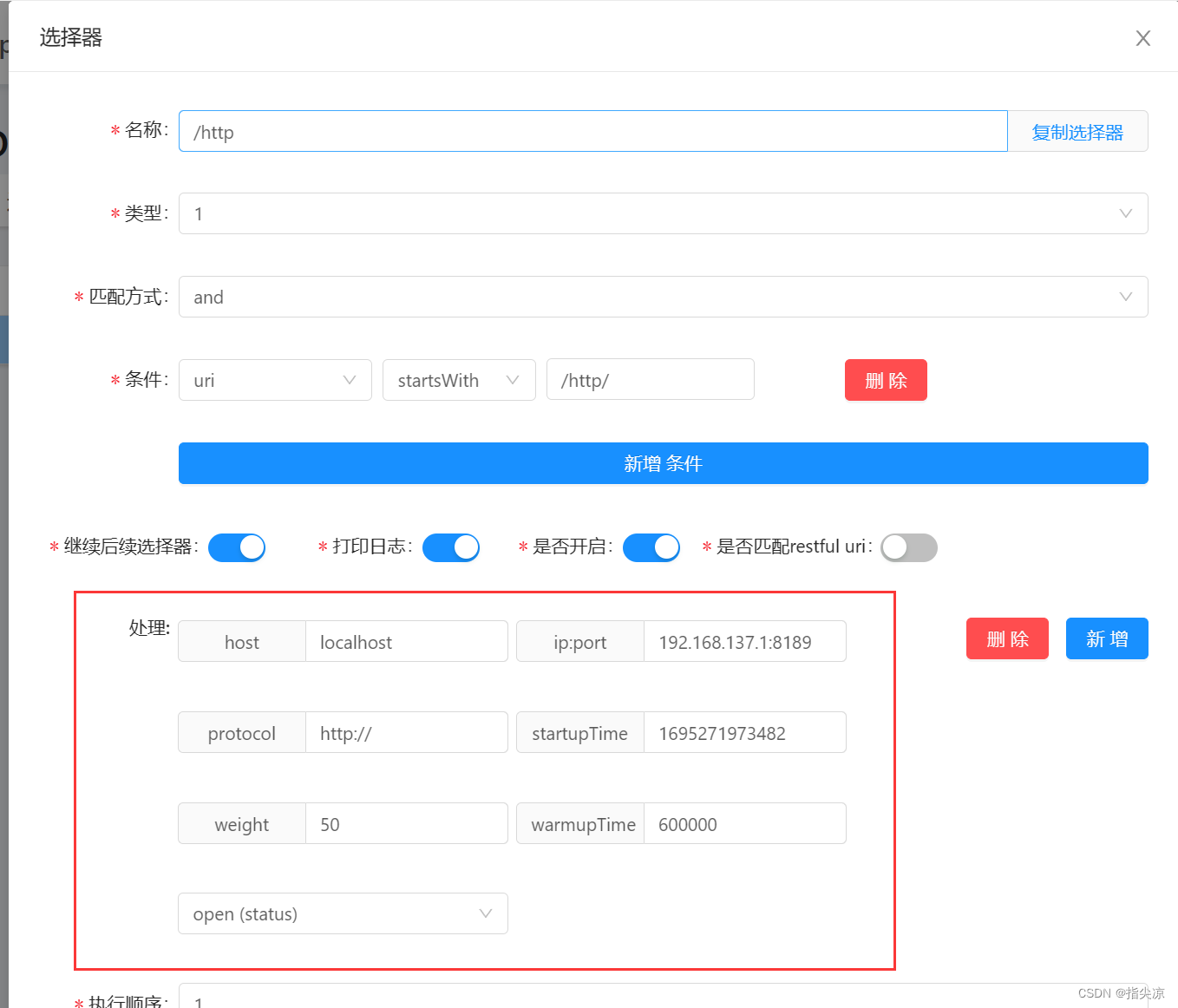
至此,服务端注册流程也就分析完了,主要通过对外提供的接口,接受客户端的注册信息,然后写入到Disruptor队列,再从中消费数据,根据接收到的元数据和URI数据更新admin的选择器、规则、元数据和选择器的handler。

参考资料:
官方博客

